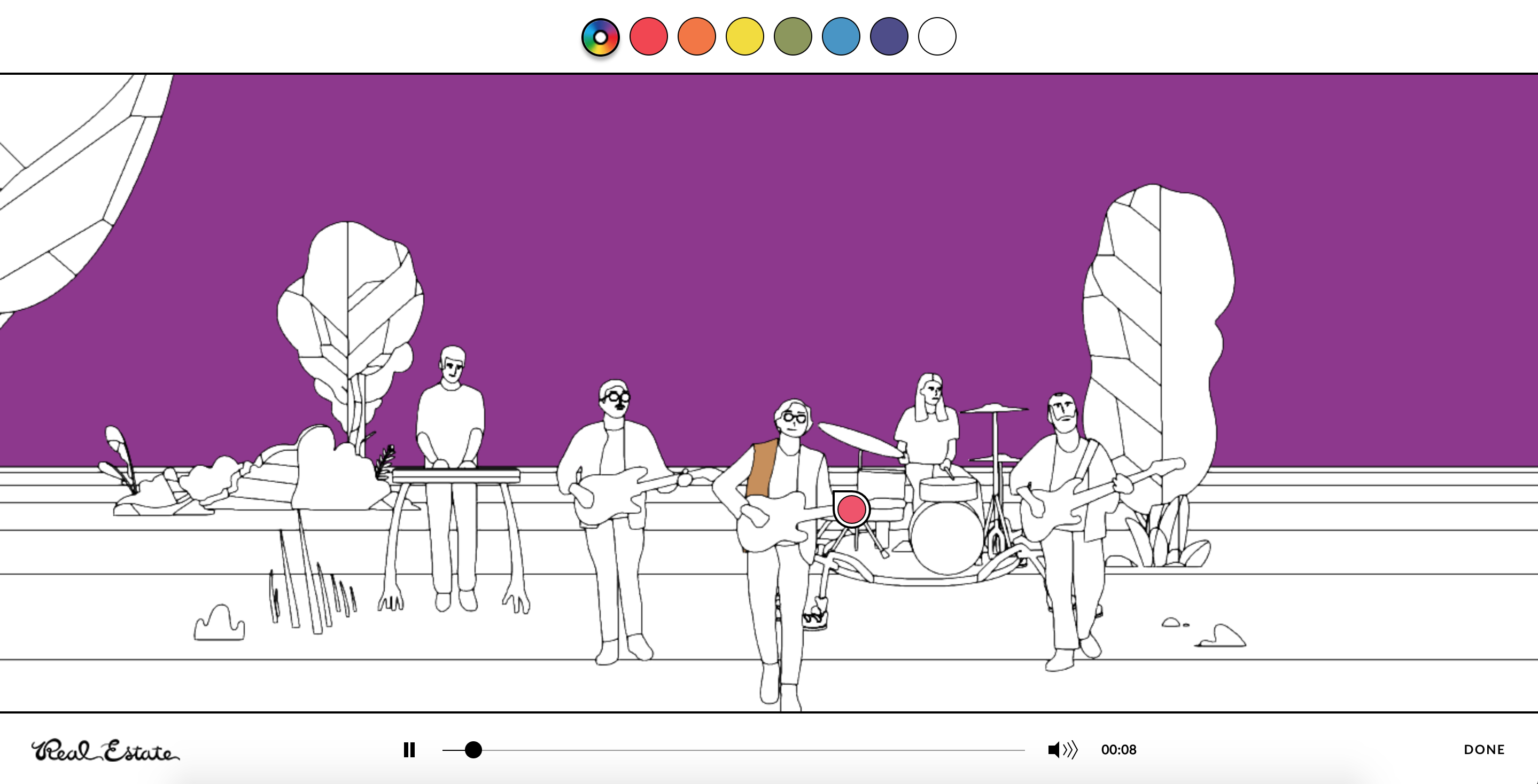
Screenshot of the website in midst of being colored
This is an interactive music video in which the video plays in black outlines and no color so that the watcher can select various colors and color the music video themselves. At the end, they can watch their own colored version of the music video and share with friends on social media. The song is called “Stained Glass” by the band Real Estate for the release of their new album “In Mind”. The video was created in collaboration with Wieden + Kennedy group creative director Craig Allen and the digital production company MediaMonks. It’s likely there was a team of 4-7 people that helped out, although I’m not as familiar with the advertising/branding industry, and there isn’t information on how long it took. Since it was with a large agency, it’s likely the band had access to industry-standard resources in creating it.
On a superficial level, this inspires me because it’s just so pretty and fun; it recalls childhood days of coloring in coloring books and pays homage to adult zentangle coloring books that help destress. I’m also baffled at the implementation— I literally haven’t the slightest idea at how they did it and I love that.
The strength of this piece lies in the conceptual reason of why this inspires me. The site allows music listeners to have a new way of interacting with an otherwise passively listened entertainment. The music industry struggles to compete with easier forms of entertainment/socializing such as eating out or netflix. The traditional model of planning months in advance, committing an entire evening or more to travel to a venue to watch something. I can see this microsite as a concept for web-based concerts: instead of simply watching a livestream, there could be elements such as color, and light that the audience can interact with (think Twitch plays rock concert). I believe audience participation is key to growing the entertainment industry. From a design/business perspective, too much of passive entertainment is already free (even active entertainment like video games are free). One could even make revisions to this piece for those who prefer passive entertainment by providing an option for people to work with existing versions that people have colored. On the other hand, from an artistic perspective, interactive art is valuable because it feels like the artist isn’t having a one-sided conversation with the audience; instead, the artist and the audience can generate an idea together.
![[OLD FALL 2017] 15-104 • Introduction to Computing for Creative Practice](../../wp-content/uploads/2020/08/stop-banner.png)